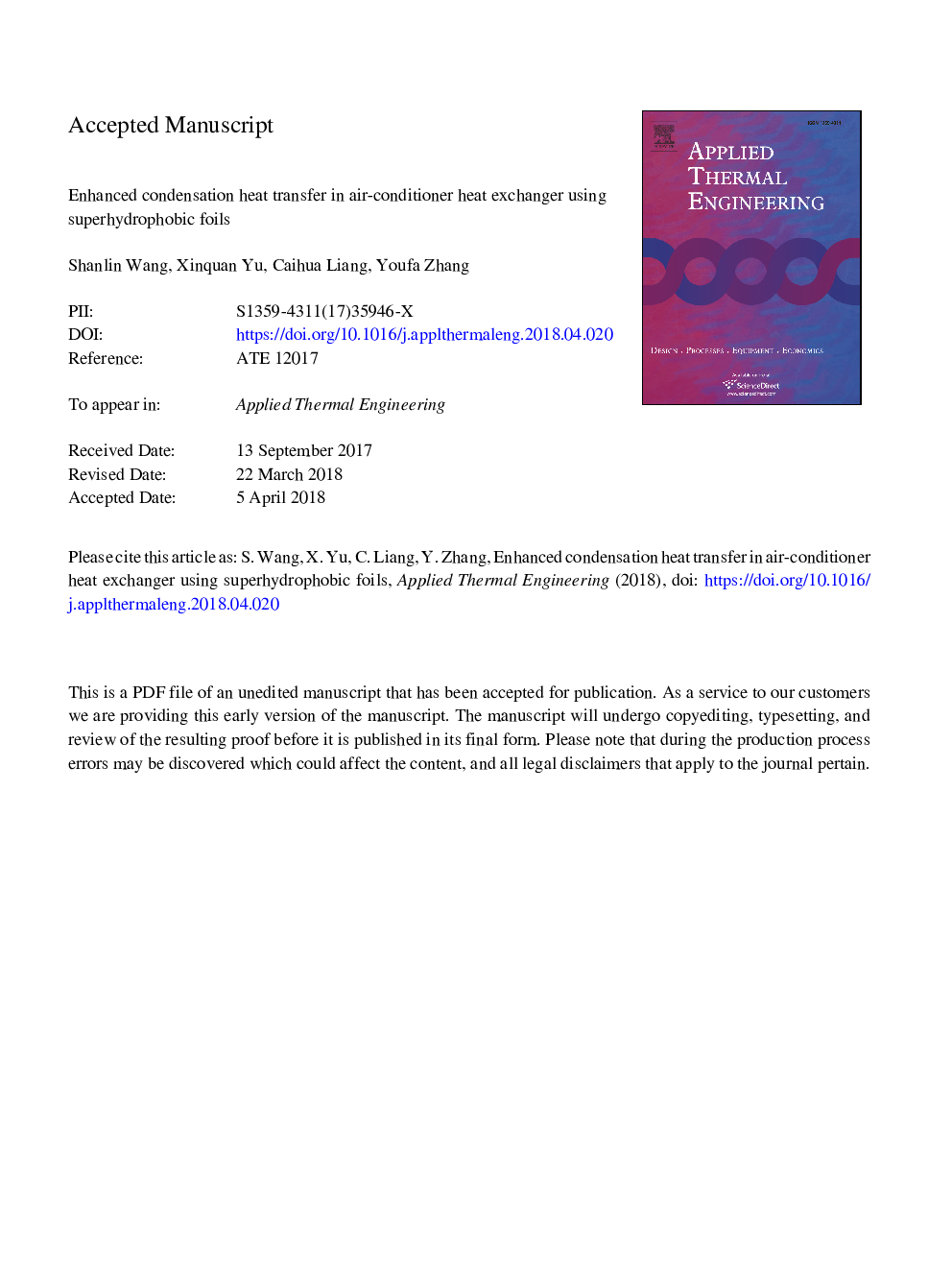| Article ID | Journal | Published Year | Pages | File Type |
|---|---|---|---|---|
| 7045505 | Applied Thermal Engineering | 2018 | 19 Pages |
Abstract
Air-conditioners have the highest energy consumption among the household appliances because of the improved thermal resistance by the filmwise condensation in summer and frosting in winter on the surface of hydrophilic foils of condensers. The wet foils are also easy to adsorb dirts and reproduce bacteria, further affecting people health in the room. Here, through chemical oxidation and subsequent chemical modification, we fabricated a novel air-conditioner fin-tube heat exchanger with superhydrophobic foils, which showed high performance in self-cleaning, anti-condensation, anti-frosting, anti-corrosion and environment stability, promising a good candidate for improving energy efficiency of air-conditioners in future. Enhanced condensation heat transfer were demonstrate on indoor and outdoor condenser in summer and winter, respectively. The results of testing revealed that the cooling capacity and heat transfer coefficient from superhydrophobic Fan Coil Unit (indoor condenser) increasing over 8 and 2% than conventional hydrophilic one under rated output working conditions. Moreover, the superhydrophobic outdoor condenser under the condition of frosting has higher energy conversion (over 85%) than the conventional hydrophilic one after 60â¯min.
Related Topics
Physical Sciences and Engineering
Chemical Engineering
Fluid Flow and Transfer Processes
Authors
Shanlin Wang, Xinquan Yu, Caihua Liang, Youfa Zhang,
